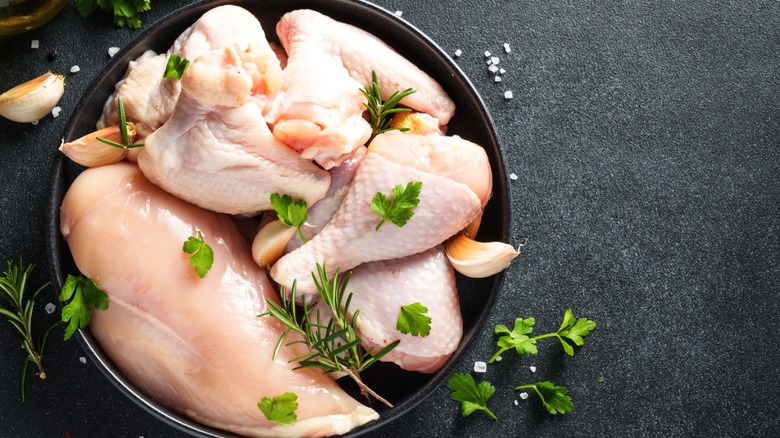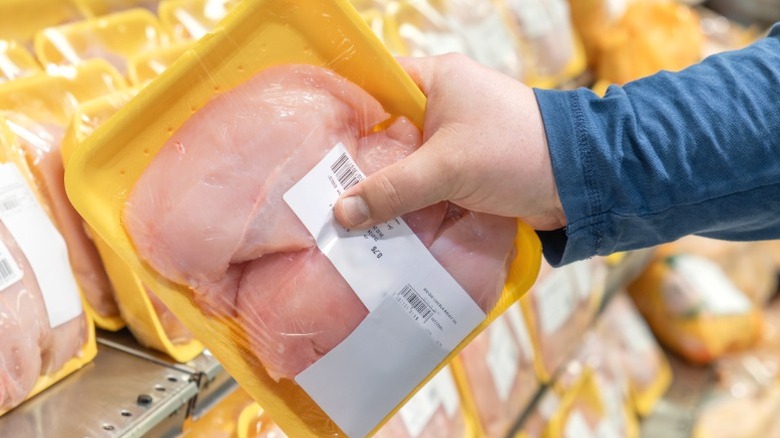How To Avoid Picking Out Bad Chicken At The Grocery Store
Whether you need some chicken thighs to chop up for a perfect sick-day chicken noodle soup or some chicken wings to toss in your air fryer, you'll probably find yourself in the meat aisle of the grocery store, considering your options. As convenient as rotisserie chicken can be, you can't rely on it for all your chicken needs — sometimes, you just have to cook it yourself. But how do you know you're picking the right chicken? How do you know you're getting a tender, tasty piece of poultry, and not a nasty, acrid ticking time bomb of salmonella? We asked Marissa Stevens, recipe developer and food blogger over at Pinch and Swirl, and she told us to use our senses: specifically, sight and smell.
When a piece of chicken goes bad, the first clue is a change in color. The poultry "should look plump and slightly pink — not gray, dull, or dried out," Stevens told us. If it's even a little off-color, that can be a sign that something is amiss.
It's also important that your chicken pass the smell test. It should be "basically odorless," Stevens explained. And "if there's any sour or sulfur smell, that's a red flag. Even 'just a little off' is reason to skip it." Unless you want to spend the better part of a week getting intimately acquainted with your toilet, it would be wise to listen to her advice.
Keep an eye on the label for important information
So now we know how to avoid chicken that means us harm. But surely that's not the only standard we abide by, right? We won't just eat any old chicken — we want the very best! Does that mean organic, antibiotic-free chicken should be your first choice? Well, it depends, according to expert Marissa Stevens.
"'Organic' and 'free-range' can mean different things depending on the brand, but I look for air-chilled and no added solution," Stevens explained. "Air-chilled birds have better texture and don't come soaked in liquid. 'No antibiotics ever' is another plus." So whether or not your bird was free-range for more than 51% of its lifespan, you can still get a quality product.
Stevens also warned us about a certain label that doesn't mean much. "I don't put much stock in 'hormone-free' since hormones aren't allowed in poultry production in the U.S. anyway — it's mostly marketing," she said. That's right, it's the old "asbestos-free cereal" trick: If a brand of chicken boasts that it's hormone-free, it can therefore imply that all the other chicken brands aren't hormone-free, even though they legally have to be. But now that you're prepared, you can shop for chicken with clear eyes and a sense of purpose — just make sure to avoid these mistakes with raw chicken to be extra-careful.

